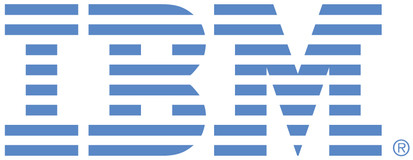
This portal is to open public enhancement requests against products and services offered by the IBM Data Platform organization. To view all of your ideas submitted to IBM, create and manage groups of Ideas, or create an idea explicitly set to be either visible by all (public) or visible only to you and IBM (private), use the IBM Unified Ideas Portal (https://ideas.ibm.com).
Shape the future of IBM!
We invite you to shape the future of IBM, including product roadmaps, by submitting ideas that matter to you the most. Here's how it works:
Search existing ideas
Start by searching and reviewing ideas and requests to enhance a product or service. Take a look at ideas others have posted, and add a comment, vote, or subscribe to updates on them if they matter to you. If you can't find what you are looking for,
Post your ideas
Post ideas and requests to enhance a product or service. Take a look at ideas others have posted and upvote them if they matter to you,
Post an idea
Upvote ideas that matter most to you
Get feedback from the IBM team to refine your idea
Specific links you will want to bookmark for future use
Welcome to the IBM Ideas Portal (https://www.ibm.com/ideas) - Use this site to find out additional information and details about the IBM Ideas process and statuses.
IBM Unified Ideas Portal (https://ideas.ibm.com) - Use this site to view all of your ideas, create new ideas for any IBM product, or search for ideas across all of IBM.
ideasibm@us.ibm.com - Use this email to suggest enhancements to the Ideas process or request help from IBM for submitting your Ideas.
IBM Employees should enter Ideas at https://ideas.ibm.com
Hi seems, it is already supported: https://dataplatform.cloud.ibm.com/docs/content/wsj/getting-started/set-up-wkc.html
If not please open a new idea.
Hi Dejan, thanks for the comment.
The big gap I see is a lack of auditability. Think about the kinds of questions the regulators ask for SOC / ISO / HIPAA. My understanding is that they take a rather dim view of the use of shared credentials, as it neuters the audit trail, increases the likelihood of a credential being compromised, and complicates rotation procedures in the event of a compromise.
The way I see it the Connection is exactly this kind of shared credential. Yes, it is protected by the ACL on the project or catalog, but there's nothing that prevents the credential from being used outside of the context of that container, either by members of the project or by someone else with whom they share the credential out-of-band. IAM is the final arbiter (at least for COS) of whether data can be accessed / modified / deleted, and from IAM's point of view all of the access via a given API key ties back to a single ID.
I know WDP balked at this integration last year because of the overhead of introducing lots and lots of information into IAM but I would think that newer enhancements like Access Groups would help in that regard. An Access Group that contains the members of a container seems like a sensible thing to me.
The problem I see with this proposal is that it completely bypasses the 'container ACL' - a connection in a project or a catalog is first and foremost governed by the ACL of that container. Saying that IAM should be used to control access to it effectively makes project/catalog concept moot.
We had discussions about IAM supporting container-based policies instead of resource-based ones, but it always ends up with the realization that we need to tell IAM how to handle project/catalog members, and then it does it. This is super-redundant - we tell IAM to do something we know, then it does it on our behalf - why bother? The only value is by allowing admin to 'override' project/catalog membership and inject super-user policies ("yes, I know you are member of the project and should have access to its resources, but for some reason I am banning you specifically").
Let me know if I misunderstood the proposal, which is entirely possible :-).